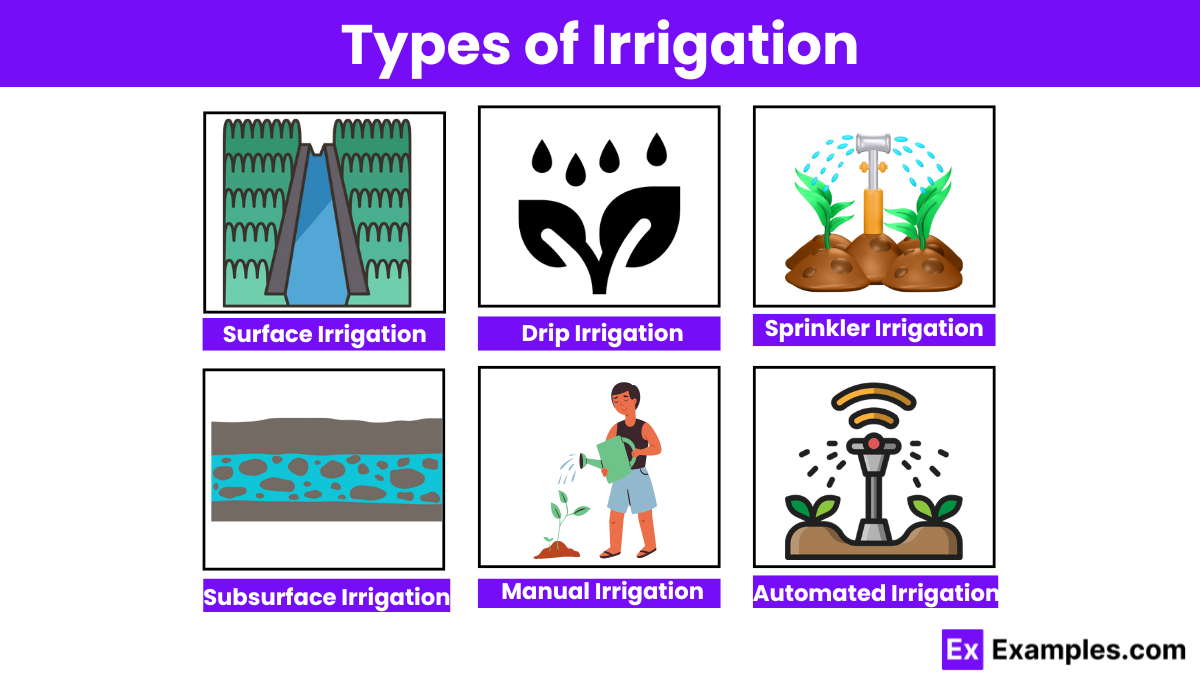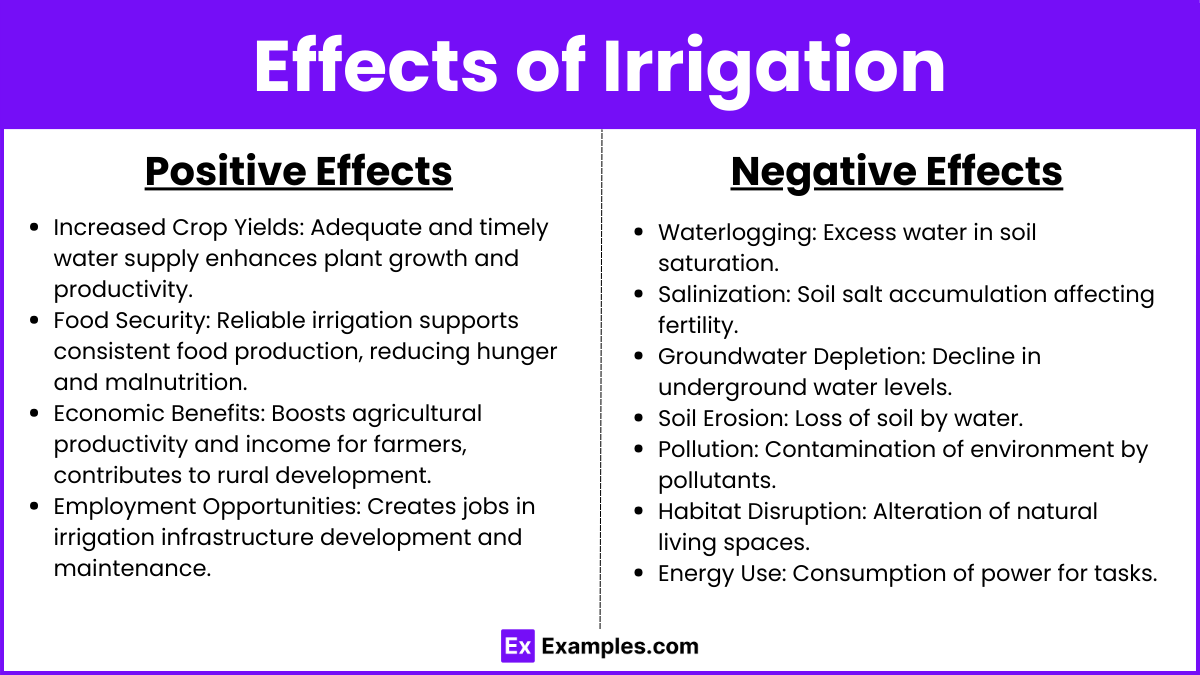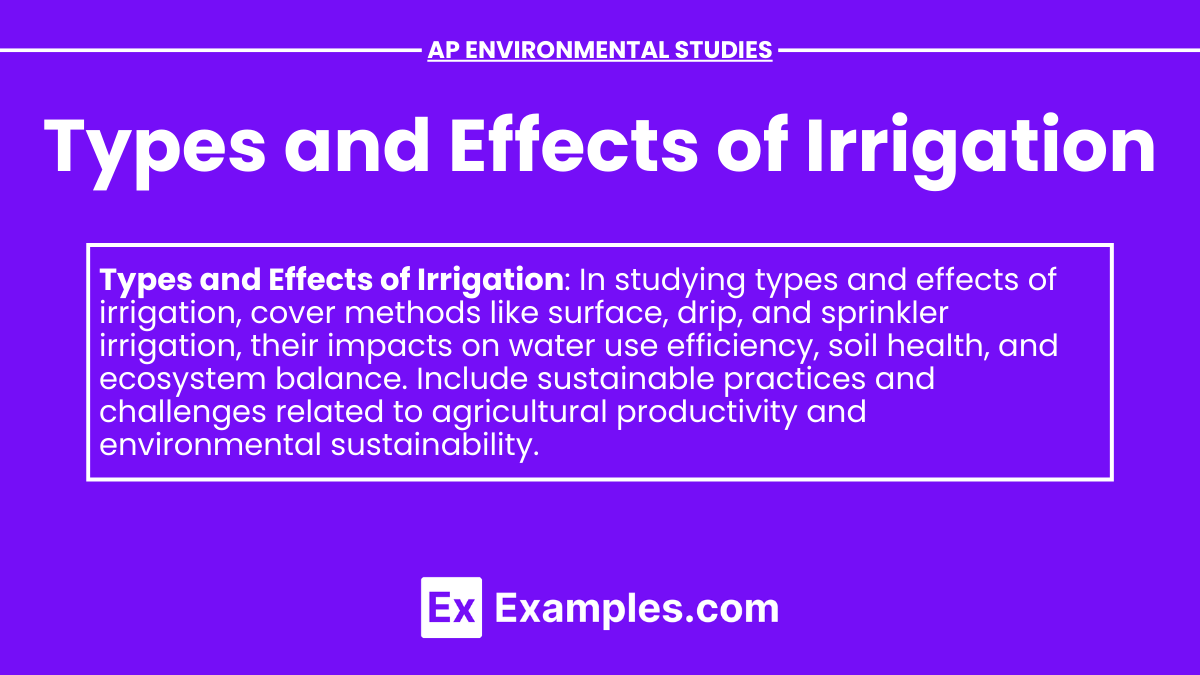Irrigation, a critical aspect of agriculture, involves various methods like surface, drip, and sprinkler systems to provide water to crops, significantly impacting ecology and ecosystems. While it enhances crop yields and food security, improper irrigation practices can lead to negative consequences such as waterlogging, salinization, and groundwater depletion, affecting biodiversity and disrupting natural processes within the biosphere. Understanding the types and effects of irrigation is essential for students of AP Environmental Studies to promote sustainable agricultural practices that balance productivity and environmental health.
Learning Objectives
The learning objectives for irrigation include understanding various irrigation types and their impacts on organisms, climate changes, and flora and fauna. Students should analyze how irrigation methods like surface, drip, and sprinkler affect agricultural productivity and environmental health. They need to evaluate the consequences of waterlogging, salinization, and groundwater depletion on ecosystems and biodiversity. Emphasizing sustainable practices, students will explore the role of irrigation in adapting to and mitigating climate changes to protect flora and fauna.
Types of Irrigation

- Surface Irrigation
- Description: Water is distributed over and across the land by gravity.
- Methods:
- Flood Irrigation: Entire field is flooded with water.
- Furrow Irrigation: Water flows in channels between crop rows.
- Basin Irrigation: Fields are divided into basins and flooded.
- Advantages: Low initial cost, simple technology.
- Disadvantages: High water loss due to evaporation and runoff, uneven water distribution.
- Drip Irrigation
- Description: Water is delivered directly to the root zone of plants through a network of valves, pipes, tubing, and emitters.
- Advantages: Efficient water use, reduces evaporation and runoff, minimizes weed growth.
- Disadvantages: High initial cost, potential clogging of emitters, requires maintenance.
- Sprinkler Irrigation
- Description: Water is sprayed into the air and allowed to fall on crops like rainfall.
- Methods:
- Center Pivot: Equipment rotates around a pivot, watering crops in a circular pattern.
- Lateral Move: Equipment moves across the field in a linear direction.
- Advantages: Uniform water distribution, suitable for a variety of crops.
- Disadvantages: High energy use, potential for water loss through evaporation, can be affected by wind.
- Subsurface Irrigation
- Description: Water is applied below the soil surface using porous pipes or drip lines.
- Advantages: Reduces evaporation, efficient water use, decreases surface runoff.
- Disadvantages: High initial cost, complex installation, maintenance challenges.
- Manual Irrigation
- Description: Water is manually applied to crops using buckets, watering cans, or hoses.
- Advantages: Low cost, simple technology.
- Disadvantages: Labor-intensive, not suitable for large-scale farming, inconsistent water application.
- Automated Irrigation
- Description: Systems that use sensors and automated controls to optimize irrigation schedules.
- Advantages: Precision in water application, labor-saving, can be integrated with weather data.
- Disadvantages: High initial cost, requires technical expertise, potential for system malfunctions.
Effects of Irrigation

- Positive Effects
- Increased Crop Yields: Adequate and timely water supply enhances plant growth and productivity.
- Food Security: Reliable irrigation supports consistent food production, reducing hunger and malnutrition.
- Economic Benefits: Boosts agricultural productivity and income for farmers, contributes to rural development.
- Employment Opportunities: Creates jobs in irrigation infrastructure development and maintenance.
- Negative Effects
- Waterlogging: Excessive irrigation can lead to water accumulation in the soil, suffocating plant roots and reducing crop yields.
- Salinization: High evaporation rates can cause salts to accumulate in the soil, degrading soil quality and affecting plant growth.
- Groundwater Depletion: Over-extraction of groundwater for irrigation lowers water tables and depletes aquifers.
- Soil Erosion: Improper irrigation practices can lead to runoff, carrying away topsoil and nutrients.
- Pollution: Use of fertilizers and pesticides in irrigated areas can lead to water contamination through runoff.
- Habitat Disruption: Alteration of natural water courses and ecosystems, affecting biodiversity and wildlife habitats.
- Energy Use: Pumping and distributing water for irrigation consumes significant energy, contributing to greenhouse gas emissions.
Case Studies
- California, USA
- Irrigation Practices: Extensive use of drip and sprinkler irrigation.
- Outcomes: High agricultural productivity, issues with groundwater depletion and salinization.
- Punjab, India
- Irrigation Practices: Predominantly surface irrigation using canal systems.
- Outcomes: Increased crop yields, challenges with waterlogging and declining groundwater levels.
- Israel
- Irrigation Practices: Advanced drip irrigation and automated systems.
- Outcomes: Efficient water use, high agricultural output, minimal water waste.


